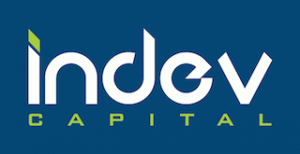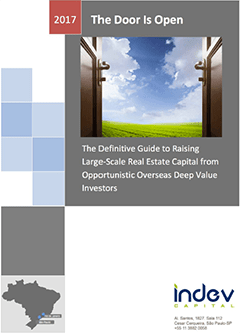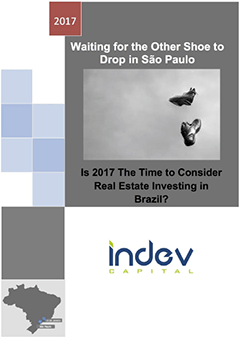“Where’s the Beef?” In 1984, there was this fantastic commercial (click on the image below) that really caught the US national attention. It very much reminds one of smart real estate investors as they look at Brazil currently and ask, “Where is the Distress?!”
This newsletter’s purpose is to provide a perspective on distressed real estate investment opportunities at this point in the real estate cycle in Brazil. The newsletter begins with an analysis of distressed opportunities in commercial real estate (existing assets) and discusses reasons why many investors have not found the severe distressed investment opportunities that they expected in the commercial sector. In the second half of the newsletter, we cover residential distress and why that sector may provide more attractive distressed investment opportunities currently.
Commercial Real Estate
As an investor familiar with the real estate cycle, perhaps the first and most logical place to seek distressed investment opportunities in Brazil is commercial real estate. In particular, completed commercial properties with tenants and existing cash flow.
Brazil enjoyed a boom in commercial real estate over the past several years. In addition, there is significant additional office capacity coming on line over the next two years.

(source: author database through work with local developers)
The commercial boom was fueled by such factors as: one, strong macro economic expansion; two, job and employment growth; three, stable political outlook; and four, significant interest by large local angel investors and family offices. Importantly, access to credit did not fuel growth in commercial real estate in the same way in a US or European market. Although banks began to offer cheaper construction loans, there was no “take out” loan upon stabilization of the project. Therefore, private developers sold a significant portion of the project to large individual investors to bridge the gap.
Why? Large individual investors, a key part of the commercial investment landscape given the lack of long term credit for commercial, sought higher yields than were offered in traditional low yielding fixed income investments at the time of the boom. Higher yields were available in commercial real estate. Low interest rates in Brazil created demand for yield and therefore the expansion of the FII or REIT market — which were funded by equity, not debt.
Ah, how the world has changed. The FII (Brazil REIT market) is effectively shut down, individual investors have access to the highest government fixed interest rates in the world, and additional commercial supply will come on line both in 2016 and 2017.
The reality is that there is very little positive news from Brazil. The economy has negative GDP growth, jobs are vanishing at a rapid pace, vacancy numbers are high, and we are in the worst recession in Brazil for arguably twenty years.
So where’s The Distress?
So where is the capitulation in commercial real estate? Where are the owners that have to sell? To understand why this has not occurred, it is important to understand who are the owners of Commercial Real Estate in Brazil. There are three types of large owners of commercial real estate: one, large Brazilian Pension Funds; two, large public developer owners; three, large private developer owners:
Pension Funds
Pension funds in Brazil often have allocation requirements that regulate their relative allocations to various asset classes. Due to the significant decrease in the BOVESPA (Brazil equity market), many pension funds desire to sell their commercial holdings to correct allocations. In addition, these investors are now very attracted to very high yields on fixed income and can achieve higher yields on government securities than commercial real estate, imagine that! These investors are net sellers but are not distress sellers. Why? They have no debt. Fundamentals work in Brazil as well!
Corporate Sellers
There are two types of corporate sellers in Brazil:
Type A: Public Companies that have a large “owner” shareholder, a small float, and a major shareholder that is very well capitalized.
Type B: Public Companies with a large base of shareholders and no “owner” or large individual or family shareholder that is well capitalized.
Type A: Corporate Owner
These firms, examples are Sao Carlos and Cyrela Commercial Properties, have corporate debt and in a normal environment would perhaps be “distress sellers.” However, due to a controlling shareholder base and/or control investor with significant capital, these companies will not likely sell assets at distress pricing.
Type B: Corporate Owner
BR Properties is the best example of this type of firm. It is fair to say that Blackstone and Brookfield’s recent transactions of R$3.14B represent very smart moves to target perhaps the best “distress” seller in the market. In addition, it is safe to say that these 15 assets are top tier. These types of opportunities exist; however, now that BR Properties has sold R$3.14B worth of properties, there are limited AAA distress office opportunities in the market
Private Developer and FII
Private developers financed their corporate developments largely from pre sales to wealthy individuals. There is very little project debt in Brazil for commercial development. No debt = Low Distress. FIIs in Brazil purchased buildings with all equity. No debt = Low Distress
Which leads us to where we started! Where is the Beef? Where is the Distress? Residential Real Estate
The residential boom in Brazil has been well documented. This growth was based on the classic expansion phase of the real estate cycle: one, positive demographics; two, increased credit (and this is the most important part of the story for finding distress); three, long term 20 to 30 year mortgages which did not exist in Brazil before 2006; four, job and income growth; five, positive economic outlook; six, positive consumer sentiment.
However, unlike commercial real estate, residential development projects utilize significant leverage. This debt is a combination of customer deposits (which could be considered lower cost equity) and bank finance. These two numbers usually equal 70% of the total costs of the project.
So what has happened in the residential market?
Lets start with the Consumer’s challenges in this environment
• Less credit is available.
• When credit is available, it is at a significantly higher interest rate.
• Larger down payments are required.
• Job outlook is negative.
• Consumer sentiment is negative.
As the buyer’s deposit capital is a significant part of the capital stack for a developer, the consumer’s troubles have an immediate impact on the viability of projects and the financial health of not only future developer projects but also current projects underway. It radically changes the developer’s cash flow. This is distress!!!!
Developers face the following challenges:
• Banks pulling back on construction loans
• If developer receives a construction loan, the banks require a higher number of pre-sales and a larger percentage of construction completed in order to release funds
• Developer corporate level debt costs have increased greatly
• Due to buyers’ distress, often when projects finish many buyers cannot borrow the money from the bank to close on their purchase.
• When a buyer cannot get a loan when the project is complete, by law the developer must return 80% of the deposit value
• Inventories of unsold units are building – sometimes 20%+ of pre-sold units come back due to lack of confidence by buyers or loan terms that the customer cannot afford.
Developer Cash Flow is declining precipitously.
Result: Residential Developers are entering deep distress and this distress is debt driven which means motivated sellers
How to Create Value in Distress in Residential – Multiple Options
Similar to Manhattan, a natural island surrounded by water, Sao Paulo is an island enclosed by traffic not acceptable to upper middle-income residents. These consumers are willing to pay to avoid the chaos of trying to drive or commute by train or bus from other regions and greatly prefer to live in top tier neighborhoods of Sao Paulo.
As stated in our Zoning newsletter, there are certain properties that cannot be re-created easily in Sao Paulo based on changes in the Urban Plan. In addition to future restricted supply, the discounts available to buy into ongoing projects and to buy completed apartments are significant. In fact, these discounts sometimes approach 50%+ reduction from the original asking price.
The motivation of the developer to sell is intense. The developer must pay down corporate debt and keep his company solvent. In fact, Hines’ recent purchase of 42.5% for R$340M of Jardim das Perdizes, perhaps the largest residential development in Brazil, represents this type of buying opportunity.
The downside protection for an investor, if structured correctly is significant. In fact, due to developers’ need for capital and investors’ negotiating leverage, we are seeing very creative ways to provide investor protections and high returns.
So given those factors, how can an overseas investor take part in this distress investment opportunity? What discounts are available? What does InDev Capital suggest?
Invest with an Existing Platform
Some residential developers are interested in shifting their business models to take advantage of the distress in the marketplace.
These developers are smart, savvy, and importantly understand the neighborhoods, the construction costs, and the market well enough to invest in distress prudently and conservatively. In fact, some developers are so interested in this opportunity that for the right strategic partner they are open to contribute their company to a new platform based on an alignment of long term interests.
This platform model is for investors who desire to invest in Brazil for the medium to long term and want to really take advantage of the environment through buying completed apartments at significant discounts, buying a percentage of broken projects, and perhaps entering structured finance through an integrated platform.
Project Level Investments – Purchasing Distressed Condo Units
InDev is in touch with many Brazilian Ultra High Net Worth investors with significant experience in the residential business and more importantly, have made significant money in the real estate development business. These individuals are investing in the distress residential space currently. InDev, in partnership with these UHNW individuals is open to investors interested in learning more about co-investing in this sector at the project / asset level.
Summary
There are distressed opportunities in Brazil and investors have an excellent opportunity to take advantage of the current state of the real estate market. Perhaps when an investor asks, “Where is distress?” a better question may be “Where is the debt?” and both are found in residential.
If you desire to learn more about what we see here in Brazil in regards to residential distress or any other matter, please email me at joseph.williams@indevcapital.com.
We look forward to hearing from you.
Best Regards,

Joseph Williams
President & CEO
InDev Capital





